
Are Electric Vehicles Better For The Planet
Last Updated: Feb 13, 2025Climate change is so hot right now. (Sorry, pun intended). As temperatures continue to rise, along with sea levels and occurrences of extreme weather events, it's never been more clear that immediate action is imperative to curb global warming's imminent effects. And a big part of that is finding alternatives to fossil fuels.
Electrification is considered a crucial component in this split. And since transportation is the biggest carbon emitter in the US at 29 percent, it only makes sense to cut carbon emissions from cars.
Table of Contents
- Enter Electric Vehicles (EVs)
- What's the Carbon Footprint of Electric Cars vs. Gasoline?
- What Is the Environmental Impact of Electric Cars?
- Are Electric Cars as Dependable as Gas Cars?
- How Do I Know Which Electric Car I Should Buy?

What's the Carbon Footprint of Electric Cars vs. Gasoline?
Oh, the trusty carbon footprint question. The considerations go well beyond simply fueling and driving in the face-off between EVs and ICEVs (that's internal-combustion-engine vehicles). It's a complex calculation that needs to consider the vehicle's entire life span from manufacturing to disposal.
At the production stage, an electric car's carbon footprint is a bit larger than that of the conventional vehicle due to the impact of making the batteries. Once it gets on the road, though, the EV catches up and eventually surpasses the traditional gas-run car on the green score after only about six to 16 months of driving.

Another critical part of the equation: location. If someone is charging their EV where the grid is largely fueled by coal, then it has a much larger footprint than when charged on a grid powered by renewable energy. Thankfully, our electricity is becoming increasingly clean. Now, 94 percent of Americans live in a region where driving an EV creates fewer emissions than driving a 50 mile-per-gallon gas-powered car.
The Union of Concerned Scientists (UCS) performed an exhaustive life span analysis of the carbon footprint of electric cars vs. gasoline. They concluded that:
No matter how you slice it, the electric car's carbon footprint is smaller than its gas-powered counterparts.
So, you can sleep easy while your EV is charging, knowing you're helping to cut down on emissions by not fueling up at the gas station.

What Is the Environmental Impact of Electric Cars?
The carbon emissions from cars start at production before they even hit the road. And EVs have an especially heavy footprint at this stage due to their lithium-ion batteries. The energy used to produce these batteries is the greatest contributor to the carbon footprint of building an electric car. The extraction and refining of the raw materials used to make the batteries—things like cobalt, lithium, and nickel—also have a sizeable environmental impact. Cobalt is especially problematic.
According to the UCS, the production of a midsize EV is responsible for 15 percent more emissions than that of a gas-powered midsize. And that proportion increases substantially to 68 percent for larger SUVs (bigger battery equals bigger footprint).
As EVs become more the norm, auto companies across the board have vowed to implement greener energy at the production level. According to the International Council of Clean Transportation (ICCT), decarbonizing the grid, recycling old batteries, and further battery innovations could decrease battery production emissions by about half.

Are Electric Cars as Dependable as Gas Cars?
In a word: yes. But it also depends on what you're looking for in a vehicle. EVs are low-maintenance, efficient, and produce virtually no tailpipe emissions. They're also arguably more fun to drive. The ride is smooth, the pickup is fast, and most models can deliver on the oh-so-satisfying "one-pedal-driving" (taking your foot off the accelerator to slow down via regenerative braking). Plus, of course, you have EV-owner bragging rights at parties.
The most significant factor when considering an EV, though, is the range. The average American drives less than 30 miles a day. The range of an EV can span from the Mini Electric's 113 miles to Tesla Model S Long Range Plus's 402 miles. Range anxiety is a real thing.
EV Chargers
Shop EV chargers for your home to make the most of your electric vehicle. For more information on EV chargers, start your research here.

Emporia Classic Level 2 48 AMP EV Charger UL Listed
Emporia
In Stock
2 Colors

Emporia Pro Level 2 48 AMP EV Charger UL Listed
Emporia
In Stock
2 Colors
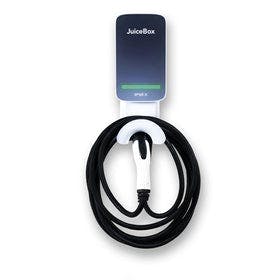
Enel X JuiceBox Residential 48 Level 2 Hardwired
Enel X
Out of Stock
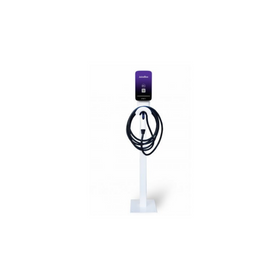
Enel X JuiceStand Pro 48" US Single or Dual Mount Commercial (JuiceBoxes sold separately)
Enel X
Out of Stock
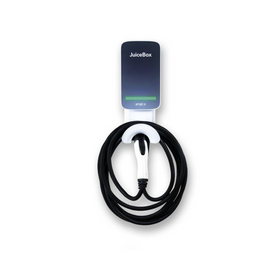
Enel X JuiceBox Residential 32 Level 2 Plug-in
Enel X
Out of Stock

Emporia Level 2 48 AMP UL Listed EV Charger with Invite2Charge
Emporia
In Stock
2 Colors
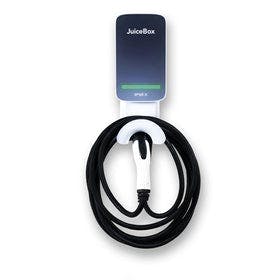
Enel X JuiceBox Residential 40 Level 2 Plug-in
Enel X
Out of Stock
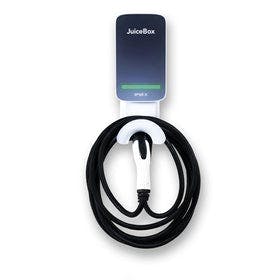
Enel X JuiceBox Residential 32 Level 2 Hardwired
Enel X
Out of Stock

Wallbox Pulsar Plus 48A Electric Vehicle Charger
Wallbox
In Stock

Wallbox Pulsar Plus 40A Electric Vehicle Charger
Wallbox
In Stock
It's certainly hard to compete with the dependable availability of gas stations. But what you can rely on is never having to worry about roller-coaster gas prices.
A full charge in a regular outlet (yes, the same outlet that charges your phone) takes about 24 to 36 hours. Your daily route likely won't totally drain your battery, though, so an overnight top-up should be more than enough. And you have the option to install a faster charger, even possibly solar-powered, when preparing for an EV in your home.
When you do need a full charge on the go, a stop at a high-speed charging station is longer than filling a tank of gas, but it's not that long.
As podcast hosts of How to Save a Planet—both Tesla owners—point out in their episode Are Electric Cars Really Better for the Planet (give it a listen for an excellent should-I-buy-an-EV rundown), it's enough time for a bathroom and snack break. Twenty to 40 minutes later, you're back on the road. Easy peasy.
Finally, driving conditions matter. Are you a city driver or an open-roader? Unlike ICEVs, EVs have a longer range in stop-and-go conditions. So, you can feel at ease driving home at rush hour. (Not to mention when you're breezing past traffic in the carpool lane, where some states allow EVs regardless of the number of passengers.)
But do note that if you live in a place where below-freezing temperatures are a regular part of life, cold weather cuts down EV range dramatically.

You can also play around with the Carbon Counter interactive tool, which helps consumers decide on a vehicle based on their needs (price, range, etc.) and the needs of the planet (total emissions from manufacturing to driving).
Or take a look at UOCS's How Clean is Your Electric Vehicle tool. It takes your zip code and EV model and compares them to the emissions of a conventional gas vehicle.
Thankfully, EVs are not, on the whole, the exorbitantly priced space cars they used to be. On top of competitive pricing across different manufacturers, there are tax credits (in both the US and Canada) available for many models.
Also, consider that:
EVs are less expensive to operate once you're driving them, thanks to lower maintenance and fuel costs.
So, do electric cars reduce our carbon footprint? If you're opting for a new EV over a new ICEV, then yes, they sure do. Is walking, biking or even public transport better? Well, yes, of course. But for those who aren't ready to give up their private ride, EVs are a big step (or, say, a long drive) in the right direction.
Lauren Jerome
Lauren Jerome is a regular contributor to Goodside's Good News Blog about climate change. She's a writer, editor, and content planner covering a wide variety of topics – from personal finance and sustainable living to food, drink, and travel. She lives in Toronto, Canada.



